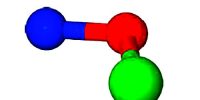The enthalpy change for a chemical reaction is ΔH1 at temperature T1 and ΔH2 at temperature T2. In science we always show a change in a variable as final minus original. So the change in temperature is T2 – T1 which leads to a change in the reaction enthalpy of ΔH2 — ΔH1.
ΔH2 — ΔH1 = Cp (T2—T1)
The constant Cp shows how sensitive the reaction enthalpy is to a change in temperature and Cp, is called the heat capacity at constant pressure. Rearrange the above equation to get T1 as the subject of the equation.
Solution
The lower temperature T1 is inside the bracket and so we need to multiply out the bracket, rearrange the equation to get Cp T1 as the subject and finally divide throughout by Cp.
ΔH2 — ΔH1 = Cp T2 — Cp T1
Cp T1 = Cp T2 – ΔH2 + ΔH1
T1 = T2 – ((ΔH2/ Cp) + (ΔH1+ Cp))
This is perfectly correct but you may also have taken it one step further to the alternative, neater form.
T1 = T2 – ((ΔH2 — ΔH1)/ Cp)










